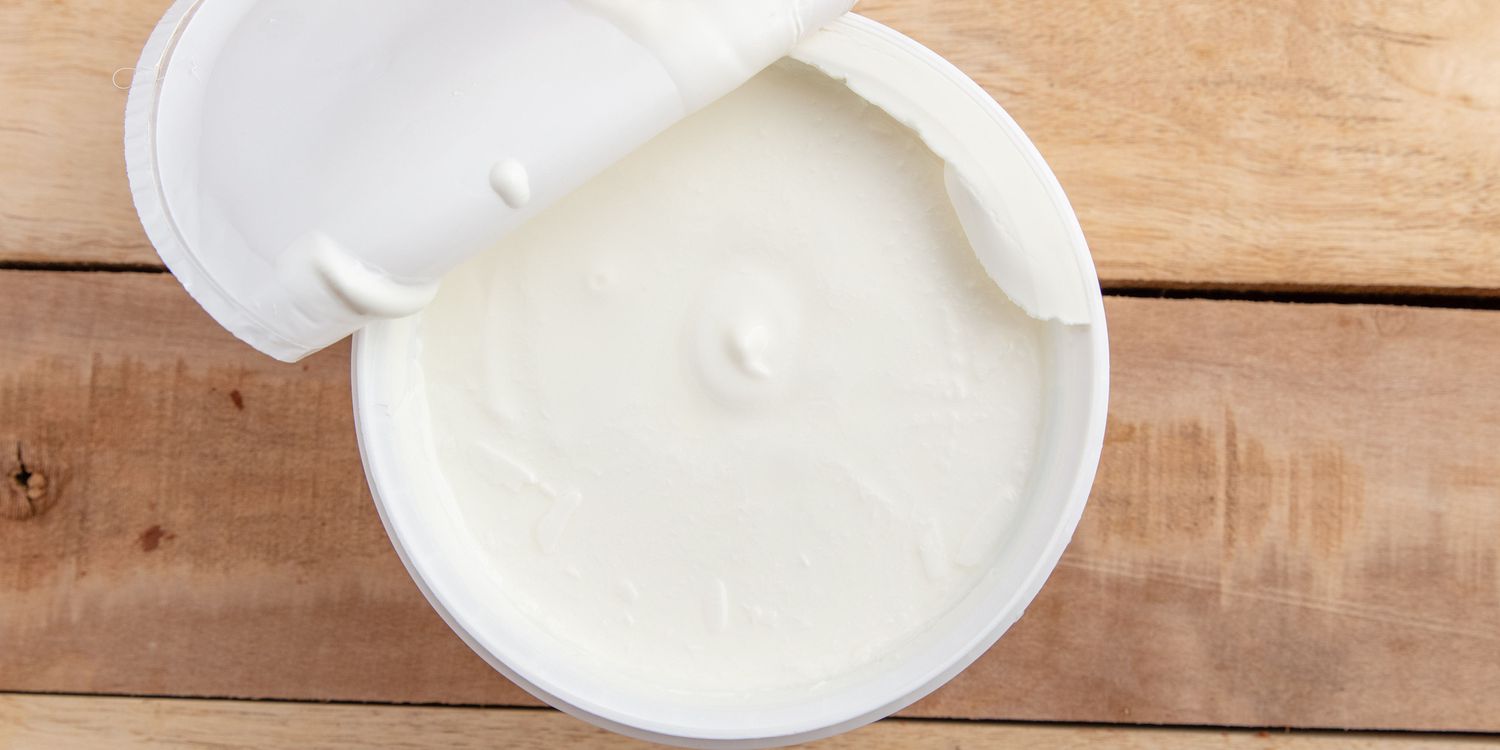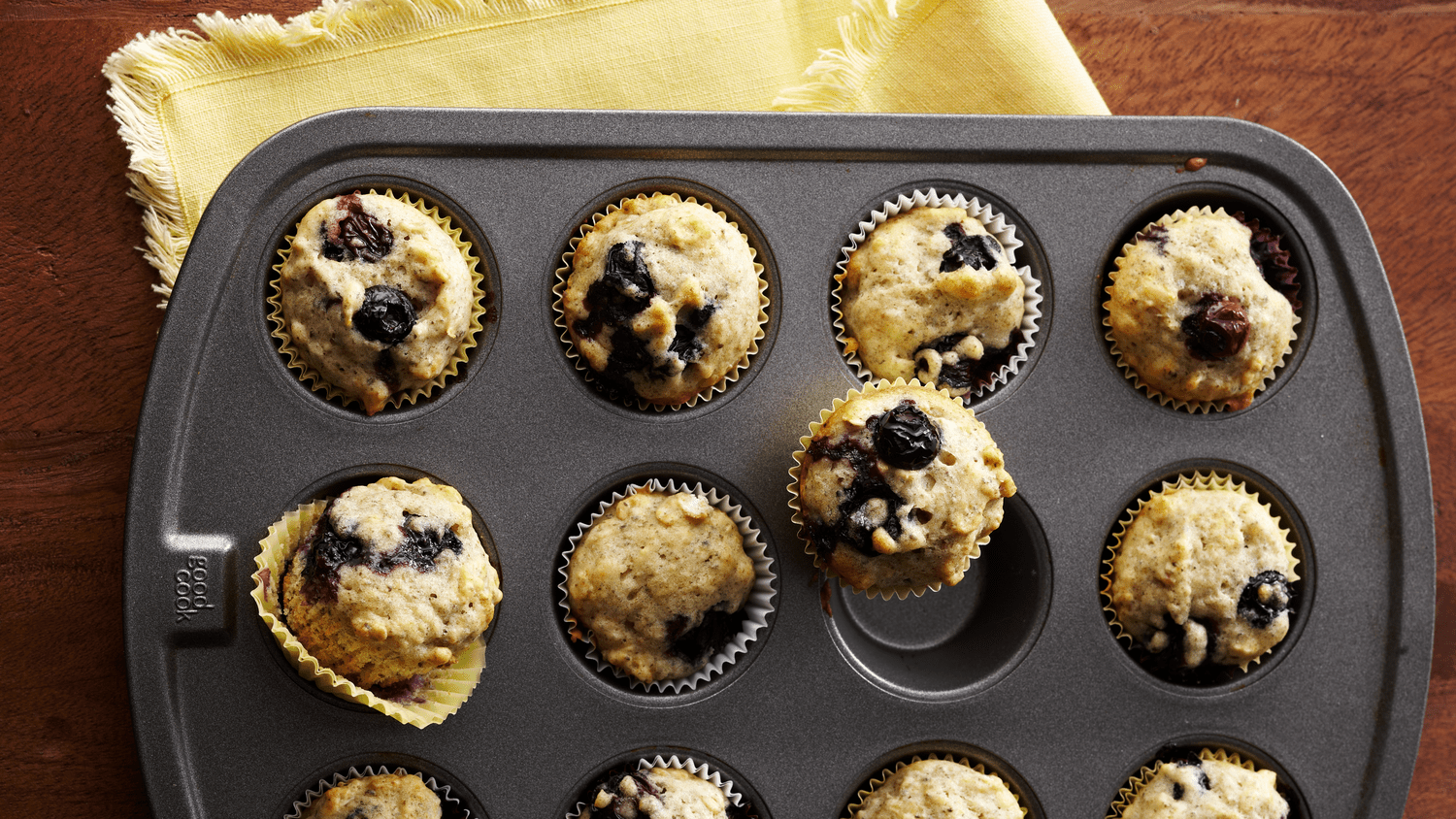You’ve made several batches of eggplant parmesan and copious amounts of baba ganoush, but you still have eggplant left over. Adding it to your next stir fry is one solution, but why not freeze it instead? Freezing eggplant is a great way to preserve it. We’re sharing (and breaking down) two of our favorite methods here.
Before grabbing your eggplant, consider how you see yourself using it in the future. Do you think you’ll like slices of it to use in sautes? Then go with the first method, which involves blanching and shocking whole pieces of eggplant. Are you envisioning a future with delicious dips? Then use the second method of roasting and pureeing. Or, if you’re unsure, do a batch of both!
Before you Get Started
Eggplant has a high water content, which means you’ll get better results if you cook it before freezing it. Before you get cooking, be sure to wash the eggplant under cool, running water and pat it dry. Set up your cutting board by placing a damp paper cloth underneath to prevent it from moving while you cut. Grab your favorite, sharp knife and follow the steps below.
Freezing Whole Pieces
It’s important to know that as soon as you slice eggplant, the flesh will start to brown. The discoloration, known as enzymatic browning, happens when the eggplant is exposed to oxygen. It’s totally normal and still safe to eat, but may not look appetizing. To limit browning, we recommend adding lemon juice to the blanching water.
STEP 1: Use a peeler or paring knife to remove the peel. Discard the peel.
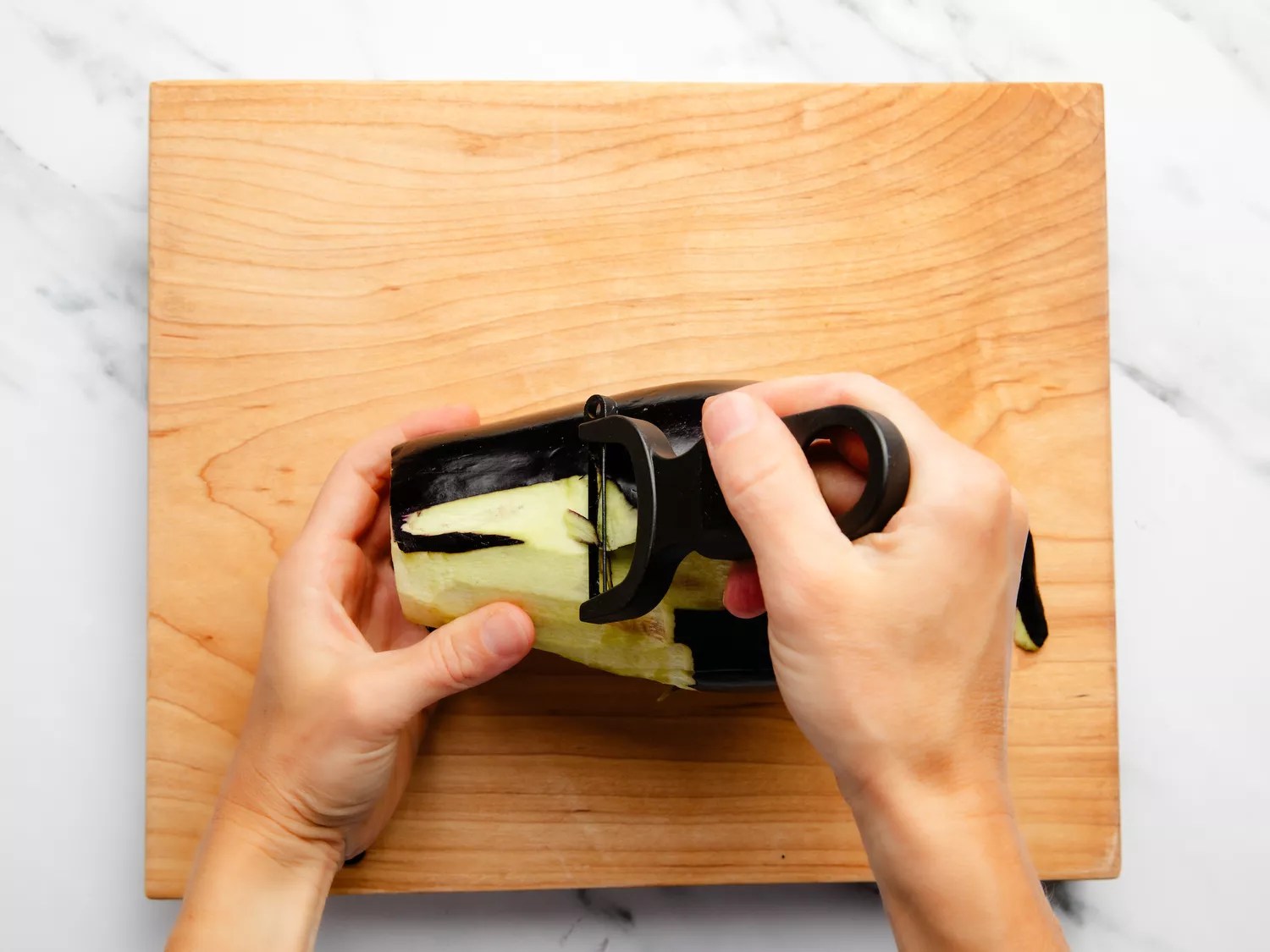
STEP 2: Cut the eggplant crosswise into slices or dice into 1-inch cubes.
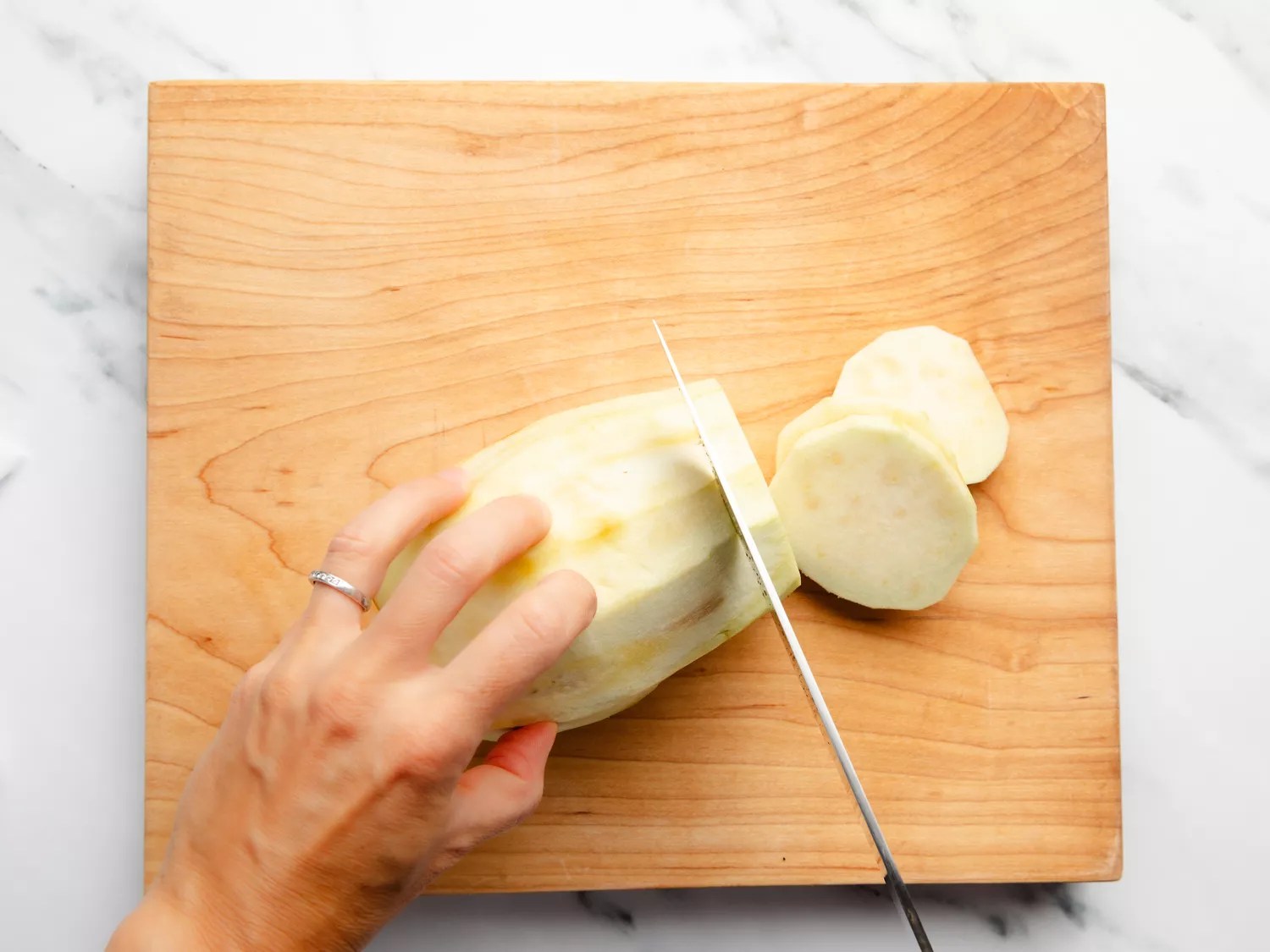
STEP 3: Bring a large pot of water to a boil. Add a generous amount of salt (2 tablespoons per quart of water). As a general rule of thumb, The National Center for Home Food Preservation recommends using one gallon of water per one pound of vegetables for blanching.
STEP 4: Set a bowl filled with ice water next to your cooktop and set a pair of kitchen tongs or slotted spoon nearby. Place a towel-lined baking sheet next to the bowl.
STEP 5: Add lemon juice (½ cup per gallon of water) and eggplant to the boiling water. Return to a boil, then cook until eggplant is crisp tender, about 4 minutes.
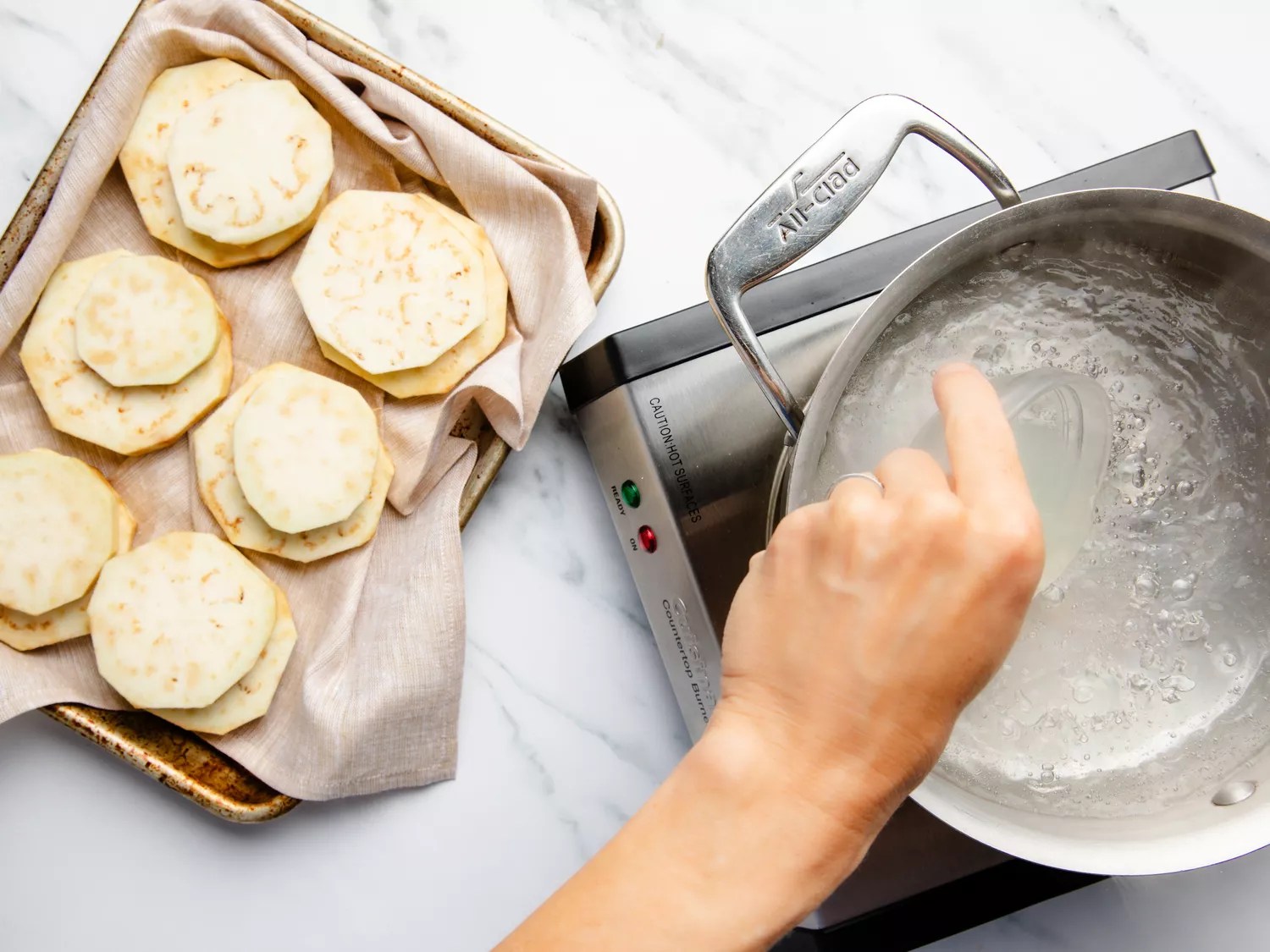
STEP 6: Remove eggplant with tongs or a slotted spoon and transfer to bowl of ice water. Push eggplant down to fully submerge. Let sit until fully chilled, about 2 to 3 minutes. Transfer to the towel-lined baking sheet and pat dry.
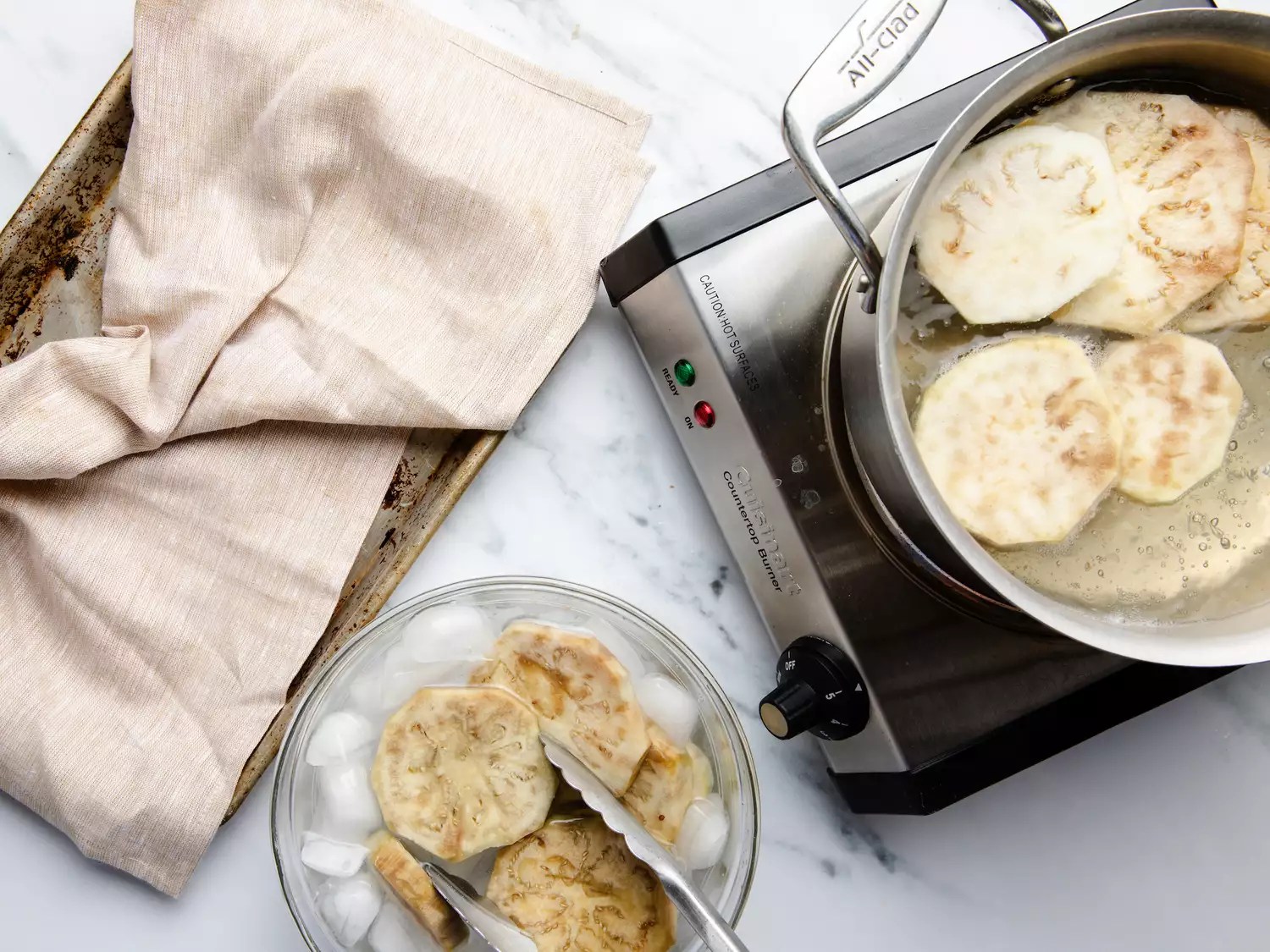
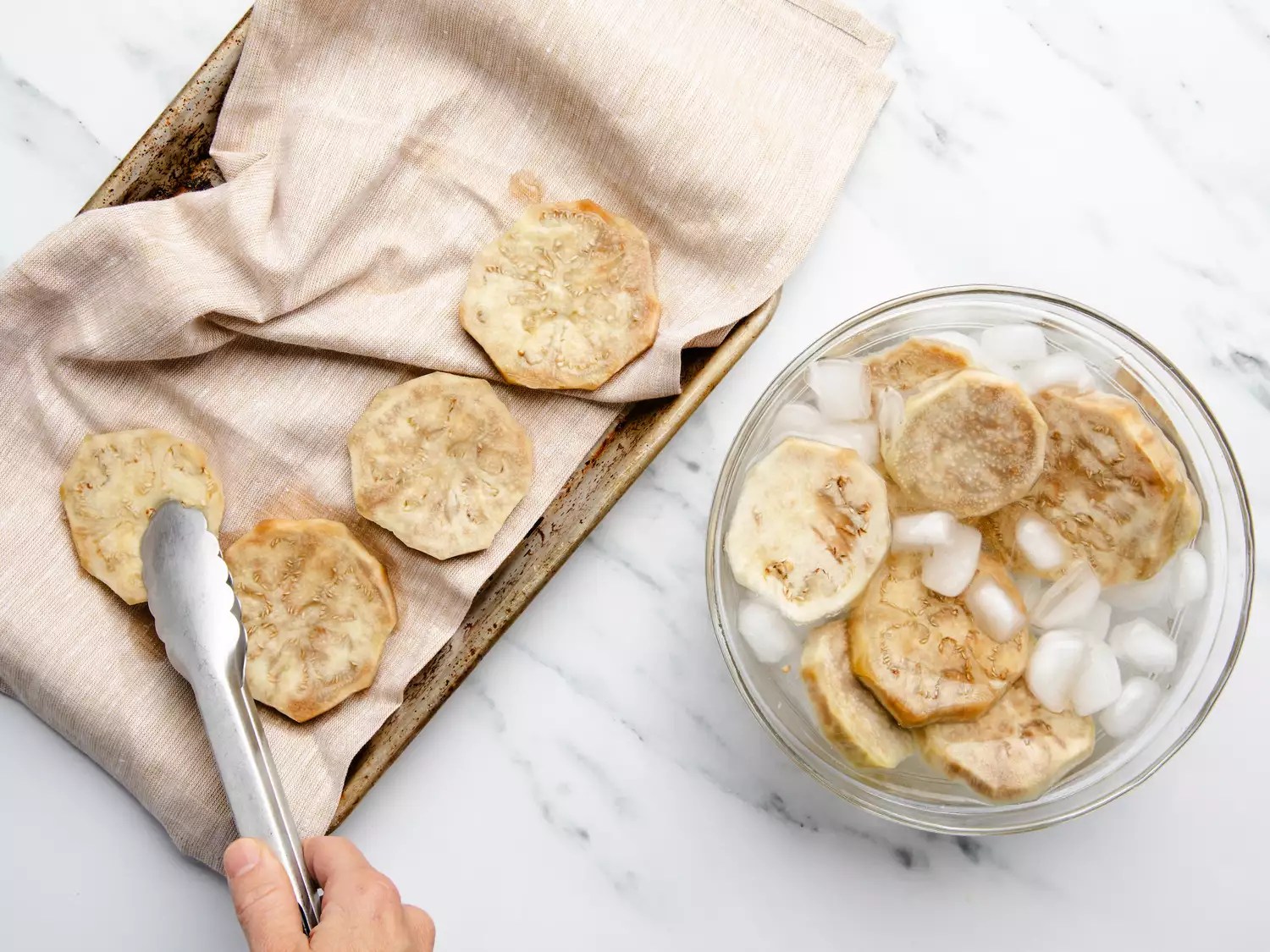
STEP 7 (for slices): Add eggplant to a resealable freezer bag in an even layer. If more than one layer is needed, cover the bottom layer with parchment before adding another layer of eggplant (this prevents them from sticking together). Label with date and contents. Use within 12 months.
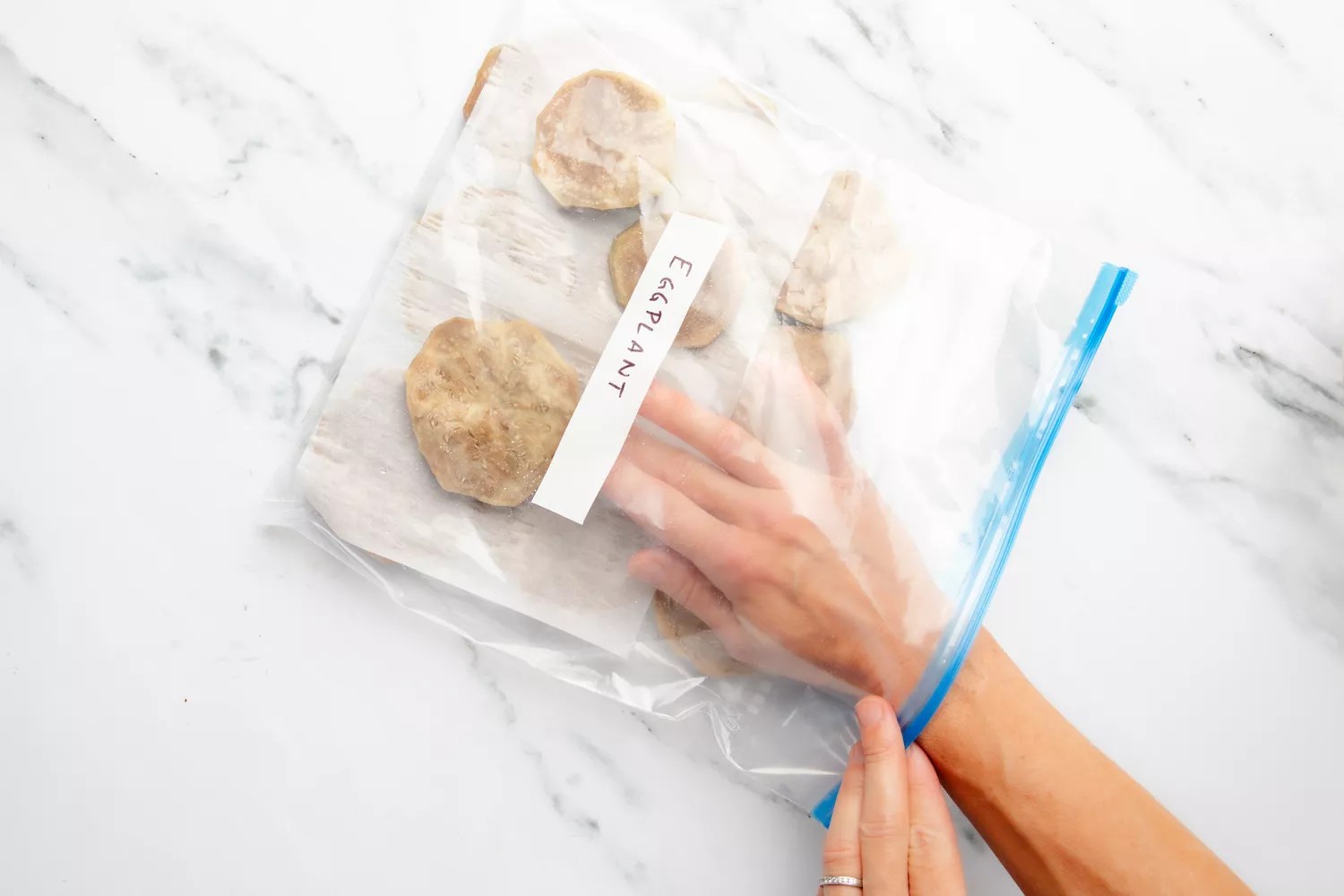
STEP 7 (for diced): Remove towel from baking sheet and line with parchment. Add eggplant, spreading in an even layer. Freeze until firm, about 1 hour. Transfer eggplant to a resealable freezer bag. Label with date and contents. Use within 12 months.
Freezing Pureed Eggplant
You can blanch and shock the eggplant and then puree, but we found that roasting it first adds flavor. This makes it an easier and more delicious base for dips, soups and sauces.
STEP 1: Preheat the oven to 400 degrees F and line a baking sheet with parchment paper.
STEP 2: Trim off top, and then slice the eggplant in half lengthwise. Brush cut sides with 1 or 2 teaspoons olive oil and place them, cut-side down, on the prepared baking sheet. Roast until flesh is tender, about 35 to 40 minutes.


STEP 3: Allow eggplant to cool slightly, then use a large spoon to scoop out the flesh. Transfer flesh to a bowl and use the back of a fork to mash to desired consistency. Alternatively, add flesh to the bowl of a food processor or blender and puree until smooth.

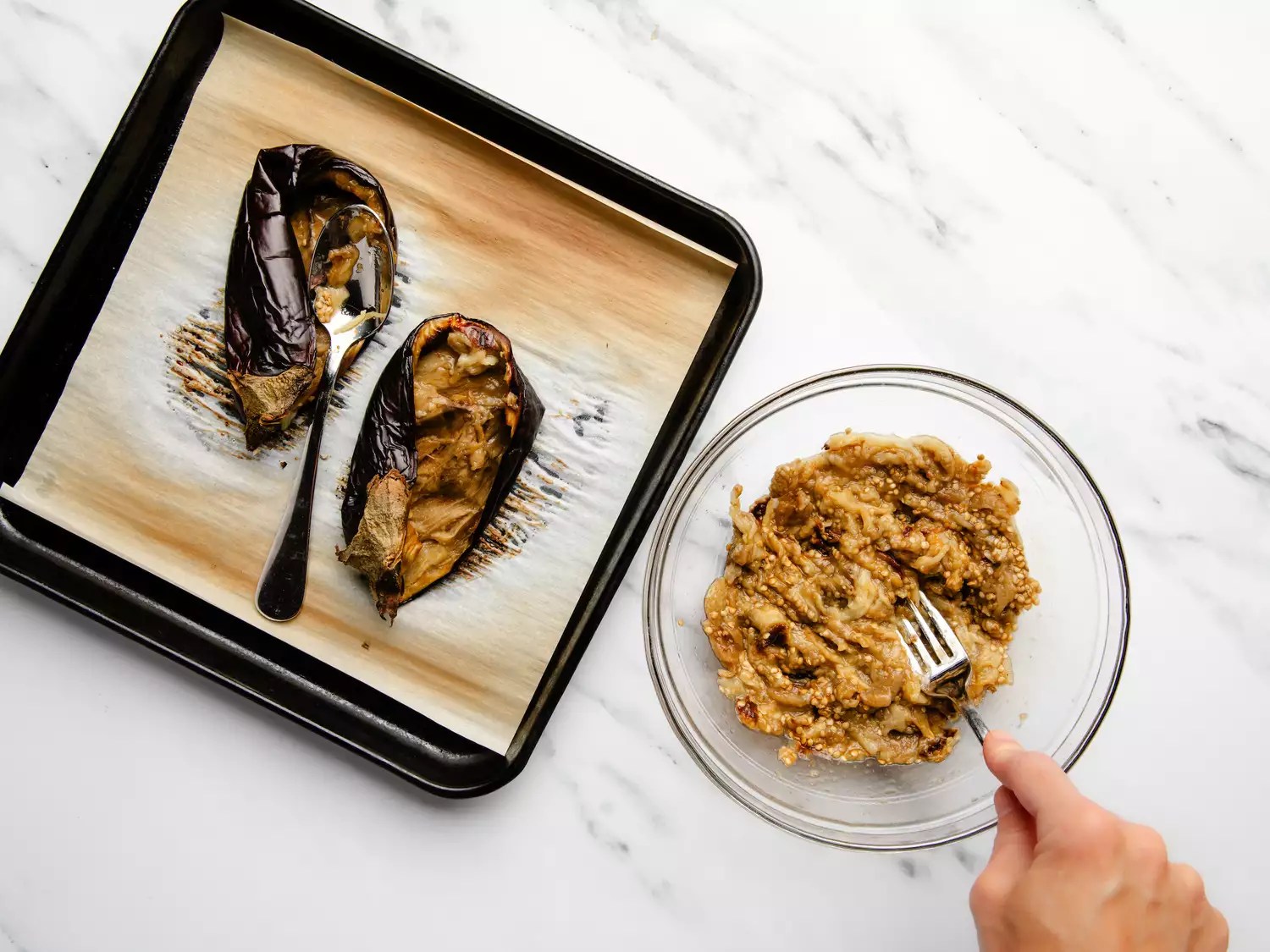
STEP 4: Once completely cooled, add the puree to a freezer-safe resealable bag or container. Label and date it, and freeze until ready to use. Use within 12 months.
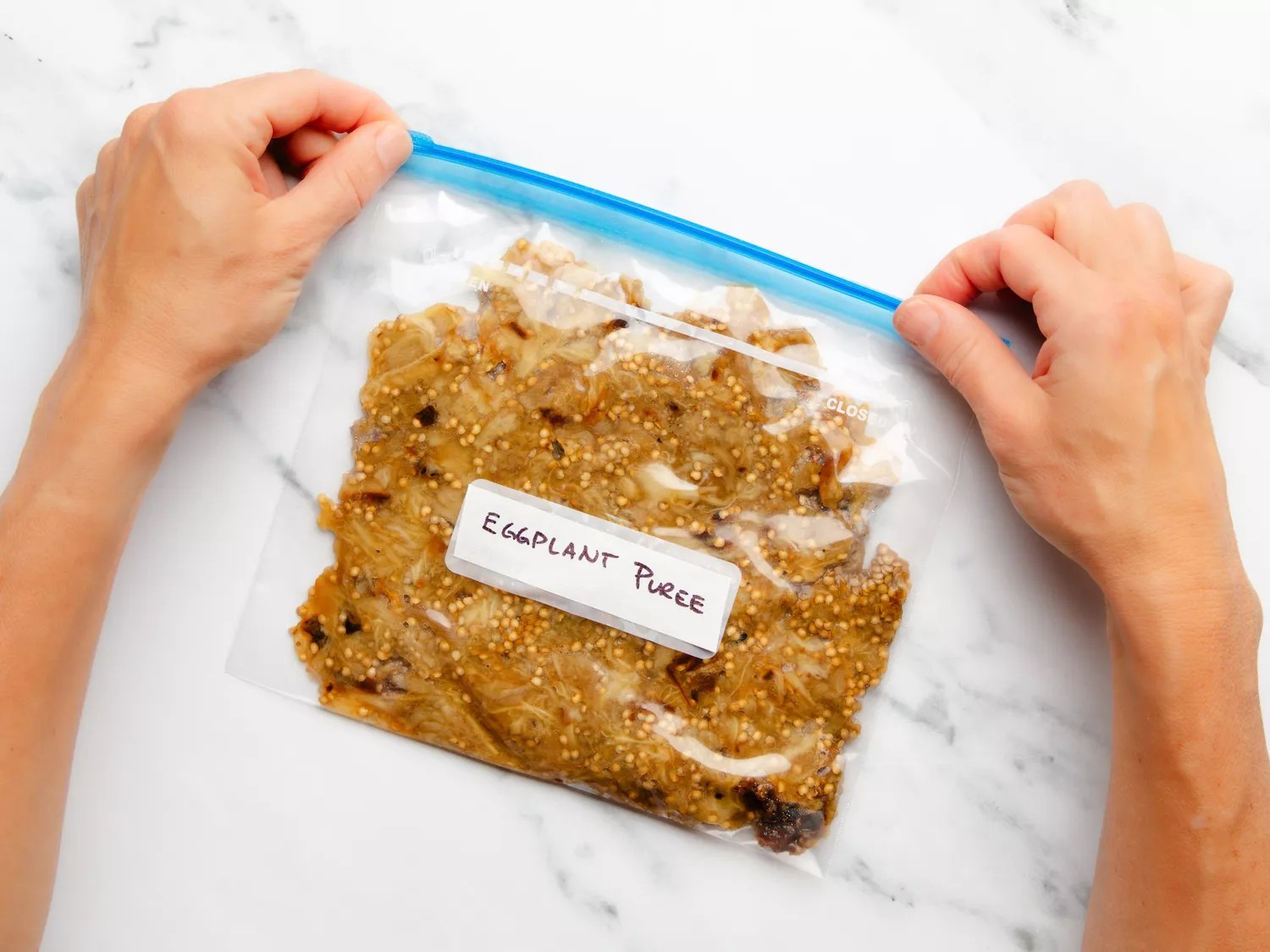
How to Cook Frozen Eggplant
Frozen sliced or diced eggplant doesn’t need to be thawed before cooking. Add it directly to your pan or pot and cook until heated through. Puree can be thawed overnight in the refrigerator.
Related:
- How to Store Eggplant
- 18 Italian Eggplant Recipes You’ll Love
- 10+ Top-Rated Recipes to Make You Rethink Eggplant



